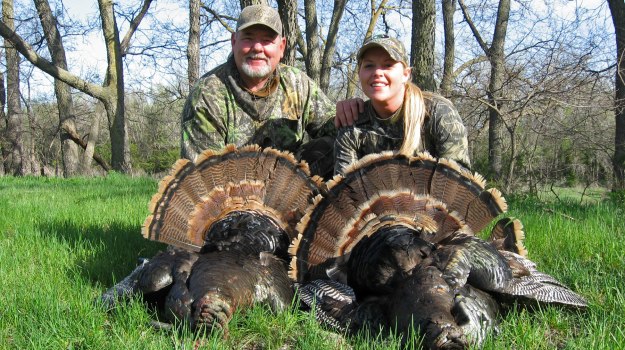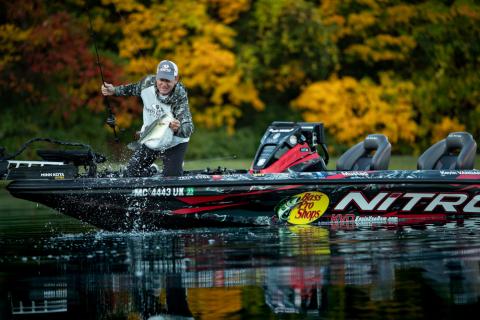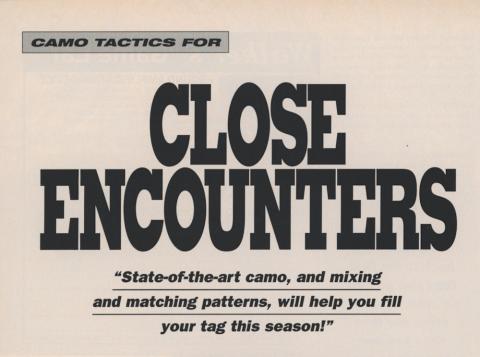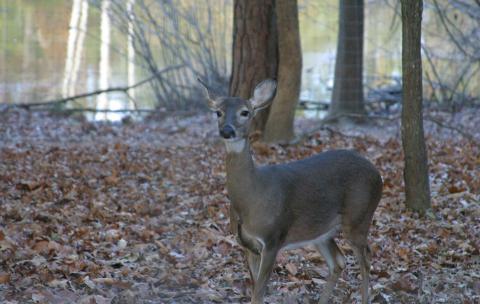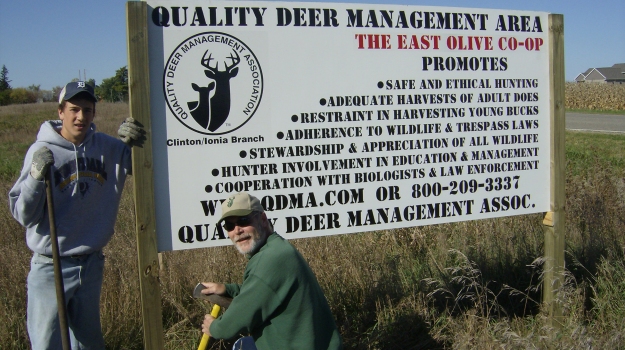
The Wave of the Future in Deer Hunting
By Brian Murphy
“We would love to participate in a deer management program on our property, but those “dirt-bags” across the fence shoot everything that moves. So, what’s the point?”
Sound familiar? I’ve heard this countless times over the years while working with hunting clubs. On several occasions, I’ve also had the chance to speak with those hunters across the fence. Guess what? They generally say the same thing about the other group. In most cases, the two groups simply haven’t talked and don’t really know how deer are being managed across the fence. Given the growing interest in Quality Deer Management (QDM) it’s not surprising that more and more hunters are talking with their neighbors and establishing QDM Cooperatives.
A QDM Cooperative is a group of landowners and hunters working together to improve the quality of the deer herd and hunting experiences on their collective acreage. Cooperatives vary in size, number of participants, and structure depending on the needs and objectives of members. A primary benefit of cooperatives is that they enable hunters with small landholdings to participate in QDM. Cooperatives are voluntary and do not entitle neighboring hunters access to your property or diminish the landowner’s control. They are simply collections of landowners and hunters who agree to abide by similar deer management guidelines over a larger area.
Cooperative Benefits
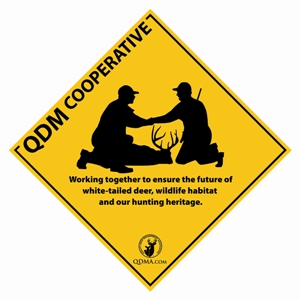 Cooperatives provide numerous benefits from a deer hunting and management perspective. They provide the opportunity to better manage the density, age structure, sex ratio, and distribution of a local deer herd. These characteristics are difficult to manipulate on small properties because deer often spend much of their lives on adjacent lands. This is a leading reason why many QDM programs on small properties fail.
Cooperatives provide numerous benefits from a deer hunting and management perspective. They provide the opportunity to better manage the density, age structure, sex ratio, and distribution of a local deer herd. These characteristics are difficult to manipulate on small properties because deer often spend much of their lives on adjacent lands. This is a leading reason why many QDM programs on small properties fail.
Cooperatives also provide the opportunity to pool deer harvest and observation data. Typically, so few deer are harvested on small properties that harvest data are of limited value. The pooling of harvest and observation data provides a more complete “picture” of the local deer herd and enables establishment of more precise management recommendations.
One of the most obvious hunter benefits of a cooperative is the opportunity to hunt a high quality deer herd containing more mature bucks. Another benefit is the improved relationships with surrounding landowners and hunters. As groups unite in a common goal, they develop a sense of pride and accomplishment in their collective effort. This requires the establishment of honesty and trust – the two most important ingredients in a successful cooperative. This will not happen overnight, and occasional setbacks will occur.
Cooperatives also can reduce costs. For example, it is more cost-effective to purchase lime, fertilizer, and seed in bulk. Another potential benefit is the sharing of equipment and other resources. One cooperative member may have a tractor, dozer, or other piece of equipment to loan, rent, or trade for another item or service. Other items that could be shared include a refrigerated deer cooler, shooting range, meeting facility, dove field, or even a blood-tracking dog.
Cooperatives also provide better control of trespassing and poaching. As hunters unite to produce quality deer, they will have an increased interest in preventing illegal access. In many cases, trespassers and poachers go unnoticed because area hunters do not know who is authorized to hunt on the adjoining properties. All cooperative members should be supplied with the contact information for area law enforcement officers and encouraged to report any suspected illegal activity. Whenever possible, these officers should be invited to attend cooperative meetings, provided keys to all gates, and encouraged to actively patrol the area.
Establishing a QDM Cooperative
The first step in establishing a cooperative is to identify a potential area. Typically, it is centered around a group of hunters already participating in QDM. Next, establish the minimum starting size of the cooperative. Generally, 1,000 acres or more are recommended, though positive results have been achieved on smaller areas.
The next step is to identify potential participants. Properties immediately adjacent to the central property are the most important, so concentrate initial efforts there. Sometimes, identifying the landowners and hunters on adjoining properties will require some effort. A great way is to talk with landowners who have lived in the area for many years. Other good sources include county tax records, county agricultural extension agents, and regional wildlife biologists. Once landowners and hunting groups have been identified, invite each to a meeting to discuss the possibility of forming a cooperative.
Prior to the organizational meeting, identify who will chair the meeting and invite a wildlife biologist to discuss deer management and the value of cooperatives. At the meeting, distribute information on the benefits of QDM and forming a cooperative. Many of these resources are available from the Quality Deer Management Association (www.QDMA.com), state wildlife agencies, extension service, and universities. Following presentations and discussions, the chairperson should ask attendees if they are interested in forming a cooperative or, at least, discussing it further.
Experience has shown that most landowners and hunting groups will not commit to participating in a cooperative during the initial meeting, so remain patient. If any attendees express interest, a follow-up meeting should be scheduled. Hopefully, by the follow-up meeting, some landowners or hunting groups will have agreed to participate. If so, make sure they are involved in the next meeting as it helps create a contagious atmosphere for others to join. The follow-up meeting should begin with a quick recap of the initial meeting. Next, begin securing commitments to the cooperative and establishing a management committee to begin developing basic membership and deer management guidelines.
Establishing Deer Management Goals and Strategies
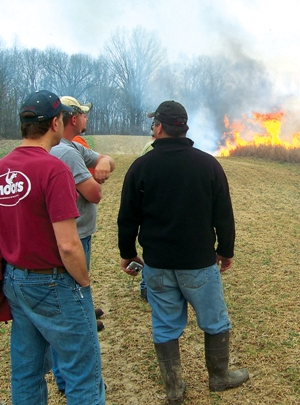 Once the cooperative is formed, realistic deer management goals and strategies must be established. Goals could include the minimum size or age of bucks to be harvested and the desired doe harvest throughout the cooperative. It is highly recommended that a qualified wildlife biologist be involved with establishing management goals. The time required to achieve these goals depends on the management strategies selected, habitat quality, and commitment level of participants. Changes will not occur overnight and participants should commit for a minimum of three to five years. Once goals are established, specific management strategies should be developed to achieve these goals. Keep in mind that cooperatives don’t prevent flexibility with respect to allowing young or first-time hunters to harvest a young buck. Remember, these are voluntary associations.
Once the cooperative is formed, realistic deer management goals and strategies must be established. Goals could include the minimum size or age of bucks to be harvested and the desired doe harvest throughout the cooperative. It is highly recommended that a qualified wildlife biologist be involved with establishing management goals. The time required to achieve these goals depends on the management strategies selected, habitat quality, and commitment level of participants. Changes will not occur overnight and participants should commit for a minimum of three to five years. Once goals are established, specific management strategies should be developed to achieve these goals. Keep in mind that cooperatives don’t prevent flexibility with respect to allowing young or first-time hunters to harvest a young buck. Remember, these are voluntary associations.
A common reason for failure of a cooperative occurs when goals and expectations exceed local limitations of deer herd or habitat. Organizers should ensure that members’ expectations are realistic and achievable. Failure also is possible when members do not allow adequate time for desired changes to occur (e.g., allowing bucks to reach the older age classes). Cooperatives may also fail due to the inability of members to judge buck age or antler size in the field or to refrain from harvesting immature bucks. Finally, cooperatives can fail if participants do not establish trust.
Dealing with Uncooperative Neighbors
Activities on non-member properties can present challenges. Two common situations include properties on which hunting is prohibited and those where hunters do not follow similar deer harvest guidelines. Many landowners who do not allow hunting either do not understand the need to control their deer herds or may have had unpleasant experiences with hunters in the past. With a careful and respectful approach, many can be convinced to allow hunting, or at least support the goals of the cooperative.
Neighboring hunters who do not follow the deer harvest guidelines can limit management success and be a source of frustration. This is particularly true where young bucks are passed by members of the cooperative, but harvested by non-members. Over time, some non-member groups can be encouraged to join. In other cases, a new landowner or hunting group may be necessary. Regardless, remain positive and keep them informed of the activities and successes of the cooperative. Nothing will do more to encourage their future participation than for them to realize they are “missing out” by not being involved. If all else fails, recognize that some losses will occur and manage accordingly. It also is important to keep in mind that few cooperatives include all properties in a given area. Therefore, even a few participating properties are better than none.
The Wave of the Future?
For hunters interested in hunting a quality deer herd, especially on small properties, QDM cooperatives offer the greatest potential for success. While cooperatives take time and effort, their benefits are well worth it. They also are great ways to develop new friendships and to share in the success of a group effort. Comments like “look at the buck I harvested” often shift to “look at the buck we produced.” The focus shifts from the accomplishment of the individual to those of a dedicated group of deer managers and wildlife stewards. So, why not contact your hunting neighbors? They just might not be the “dirt-bags” you think they are. And, they may say the same about you. You have nothing to lose and so much to gain.
Brian Murphy is an avid hunter, wildlife biologist and CEO of the Quality Deer Management Association (www.QDMA.com). He has worked exclusively in deer research and management for 25 years during which he has presented more than 600 lectures and authored more than 125 popular and scientific articles, book chapters and other educational materials designed for deer hunters and managers.















